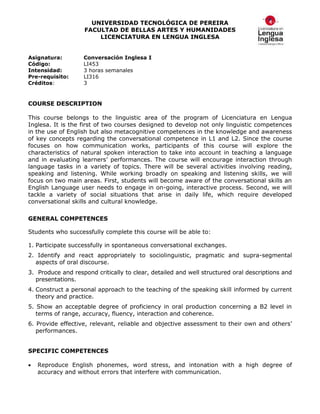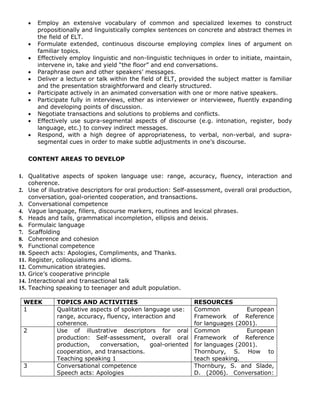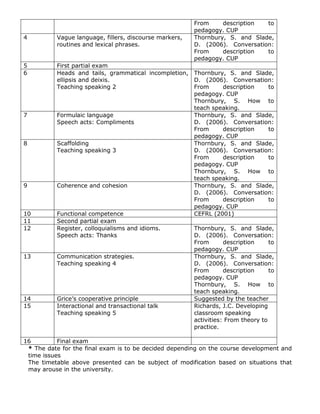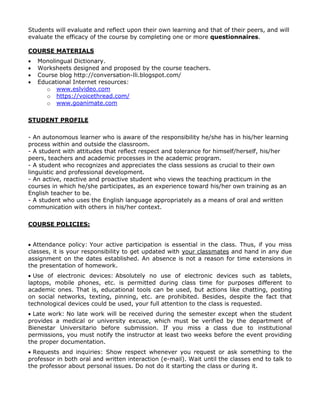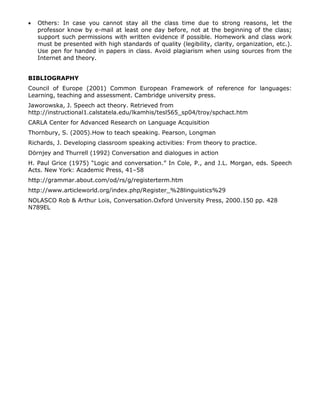This document provides information on an English conversation course offered at Universidad Tecnologica de Pereira. The course aims to develop students' conversational competence and metacognitive skills in English. It will focus on spoken interaction, social situations requiring conversation skills, and teaching speaking methodologies. Students will practice conversations through activities and presentations. Evaluation will consist of formative, summative, and self-assessment, including exams, in-class work, and reflection on learning. The course aims to prepare autonomous, respectful, and active English language teachers.
